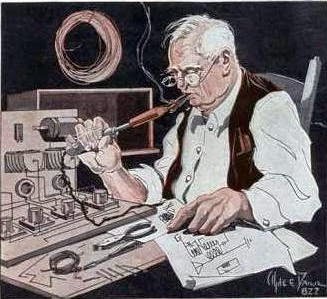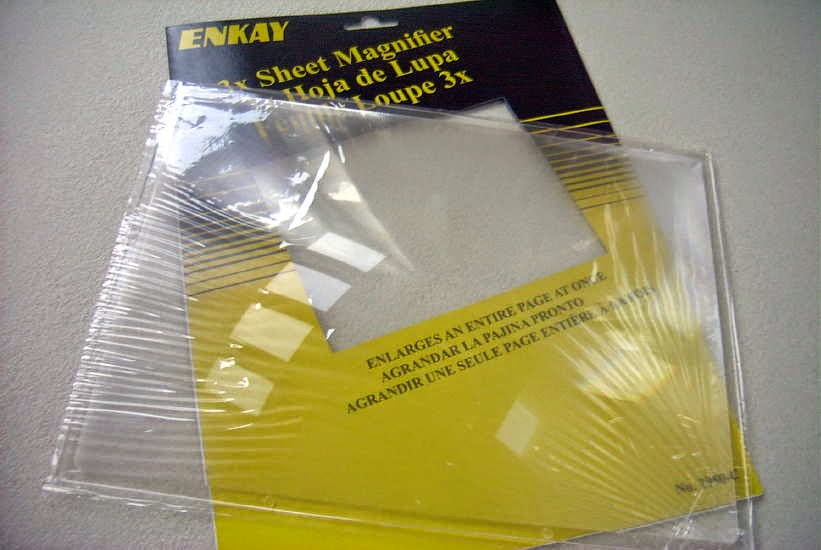 Another G1KQH bargain
Another G1KQH bargain
This came in from Steve, G1KQH, today. It is often cheaper to buy the completed, built modules from China than to buy the parts in the UK! What is the world coming to?
I bought 5 LM317s on PCB with heatsinks for a fiver:
Why bother building it any longer, that used to be half the fun! The heatsinks would of cost a Quid each over here, never mind the LM317 and the PCB with connectors..Happy days73 Steve G1KQH
Roger Lapthorn, G3XBM, is a regular contributor to AmateurRadio.com and writes from Cambridge, England.
 Ham College episode 1
Ham College episode 1
Ham College episode 1 is now available for download.
Ham College, the new show for those new to the hobby and those wishing to get into Amateur Radio.
In episode 1 we bring you some news, discuss what an ‘Elmer’ is, talk about early radio history, build a spark gap transmitter, present 10 more questions and answers from the Technical class question pool, and more.
Your excuses for not becoming a Ham have just expired.
1:15:46
George Thomas, W5JDX, is co-host of AmateurLogic.TV, an original amateur radio video program hosted by George Thomas (W5JDX), Tommy Martin (N5ZNO), Peter Berrett (VK3PB), and Emile Diodene (KE5QKR). Contact him at george@amateurlogic.tv.
 A chance to get some radio time in…….
A chance to get some radio time in…….
| Some radio time |
| P3 external screen |
Mike Weir, VE9KK, is a regular contributor to AmateurRadio.com and writes from New Brunswick, Canada. Contact him at ve9kk@hotmail.com.
 ’29 MOPA / NLOS Lightwave Progress
’29 MOPA / NLOS Lightwave Progress
 |
| Courtesy: http://www.arrl.org/ |
I've now completed a set of tank coils for the new'29 MOPA project. These were wound with 3/16" copper tubing which has become very difficult to source. Luckily, after much searching, I was fortunate enough to find several rolls locally at a very attractive price. Although I do see it quite often on e-bay, sellers either refuse to ship to Canada or their shipping charges are far too high to make it worthwhile. The larger 1/4" rolls are still readily available, but for any given inductance, will take up a lot more room on the breadboard if space is an issue.
These coils cover the amplifier tank, the Hartley oscillator's tank, and the antenna coupling link. Respectively, the coils measure 4.9uH, 4.0uH and 1.9uH.
Winding these is always fun but the method used requires that the needed length be predetermined and cut from the roll beforehand. The first time I did this, when building my TNT transmitter, I learned the hard way to always add at least another foot to cover the additional length eaten-up by turn-spacing and for coil end flattening and mounting.
While visiting Vancouver for a few days I was able to find a couple of pieces needed for my non-line of sight (NLOS) lightwave experiments.
I purchased a nice 4.25" magnifier lens, with suitable focal length, as well as an inexpensive page-size fresnel magnifying lens. What is particularly pleasing is that the fresnel is a rigid lens, about 2 mm thick, unlike most page magnifiers that are thin and floppy. I have yet to test its blur circle or determine its focal length.
I plan to use one or the other of these lenses in a small, portable lightwave receiver module that I can carry to the other side of the island to listen for the main large transmitter, aimed slightly above the horizon, in beacon-mode. If the smaller fresnel does the job, it will be an inexpensive source for anyone else needing a simple lens for either transmitting or receiving.
If the deep-red light tests prove successful, I'll switch the system to IR light but at this stage I'm not sure how focusing and optimizing receivers and transmitters can be done with a light source that is essentially invisible? Perhaps using an IR source that is right on the edge of deep-red will still have enough visible light to allow finding the optimum focus more easily.
More information on NLOS experiments can be found in Yahoo's Optical DX Group as well is in G3XBM' s 481thz blogs.
As well, anyone in the Vancouver lower mainland (as far as the northern Sunshine Coast area) that might be considering lightwave ... I'd love to work you! Pretty well any high spot in this region is direct LOS for me.
Steve McDonald, VE7SL, is a regular contributor to AmateurRadio.com and writes from British Columbia, Canada. Contact him at ve7sl@shaw.ca.
 The Spectrum Monitor — February, 2015
The Spectrum Monitor — February, 2015

Stories you’ll find in our February, 2015 issue:
Monitoring the Russian Navy (Part 1)
By Tony Roper
In previous articles, military monitoring specialist, Tony Roper, took us inside NATO war games (TSM July 2014) and showed us how to monitor the Russian Air Force (TSM October 2014). In the first of a series, Tony turns his attention to the Russian navy and shows you how you can listen in CW and, amazingly, even track their positions.
The Amateur Radio Parity Act is Down, But Certainly Not Out!
By Richard Fisher KI6SN
The Amateur Radio Parity Act of 2014, proposed last June by U.S. Representative Adam Kinzinger (R-Illinois), never got out of the House Energy and Commerce Subcommittee on Communications and Technology. To paraphrase American author-humorist Mark Twain, the death of H.R. 4969, “is an exaggeration.” Proposed to protect radio amateurs and other communications hobbyists from private communities’ unreasonable antenna restrictions, it is expected to be back in play in the newly minted 114th Congress. Think of the legislation as merely hibernating.
Listening for WWII POWs
By Rich Post KB8TAD
It wasn’t the New Year’s Eve he had anticipated. Twenty-two year old Second Lieutenant George Klare was navigator on a B-17G bomber based in England. As part of the 418th squadron, he was at the navigator’s table reviewing the flight path of the bomber in the direction of Hamburg and its synthetic oil refineries, which were so vital to the German war machine during World War II. He had no idea that this might indeed be the last time he would see London during the war.
W9GRS: Middle School Amateur Radio Station Update
By Troy Simpson W9KVR
Teaching junior high science can never be accused of being boring, at least here in rural Illinois. Coming off what I would call a “rebuilding year,” in my last article, the 2014-2015 school year has seemed to hit its stride and halfway through we can say it has been a very eventful year! The school station W9GRS has settled into its new home in Room 115 with the sounds of PSK31 tones and voices often filling the air during the last class period of the day.
D-STAR – its History and its Future
By Cory GB Sickles WA3UVV
In 1999, about 10 years after the genesis of P25, the Japan Amateur Radio League (JARL) began developing a new standard for digital voice and data operation. Predominately funded by the Japanese government, in a similar – but different – way we might find a project funded by a grant allocation, the JARL committee’s work was released in 2001 and the Digital Smart Technologies for Amateur Radio—D-STAR was created. But why has the second oldest and first digital voice methodology created specifically for amateur radio taken so long to take hold and what is its future?
The Spectrum Monitor is available in PDF format which can be read on any desktop, laptop, iPad®, Kindle® Fire, or other device capable of opening a PDF file. Annual subscription (12 issues, beginning with the January 2015 issue) is $24. Individual monthly issues are available for $3 each.
Ken Reitz, KS4ZR, is publisher and managing editor of The Spectrum Monitor. Contact him at editor@thespectrummonitor.com.
 Low cost kits
Low cost kits
See http://www.aliexpress.com/store/331885 . This website has some very low cost rigs for sale. An example is a 40m Pixie at around $10 post free. You’d be hard pressed to buy the individual parts for less!
UPDATE 1430z: I have just ordered a 40m Pixie kit from them. Should be here in 2 to 3 weeks time. I hope I can manage to build it with my clumsy soldering currently.
UPDATE 2000z: G1KQH has found the same Pixie at an even better price:
Greetings RogerI could of saved you a fiver out of your pension but you had to rush in:73 Steve
http://www.g1kqh.talktalk.net/
Roger Lapthorn, G3XBM, is a regular contributor to AmateurRadio.com and writes from Cambridge, England.
 Hardly any young people are becoming hams anymore
Hardly any young people are becoming hams anymore
This is what Ed Muns, W0YK, said in an interview the other day, and goes on with “because they see this as kind of old school stuff.“
A year ago the ARRL web site said: “Amateur Radio showing steady growth in the US“. AH0A’s website with statistics over the US ham population backs this up with the curve shown here. Even in my local club we are now seeing young people signing up for licence classes.
How different perspectives! How has an old radio amateur like W0YK come to believe in the myth of declining numbers of hams?
Sverre Holm, LA3ZA, is a regular contributor to AmateurRadio.com and writes from Norway. Contact him at svholm54@gmail.com.


















